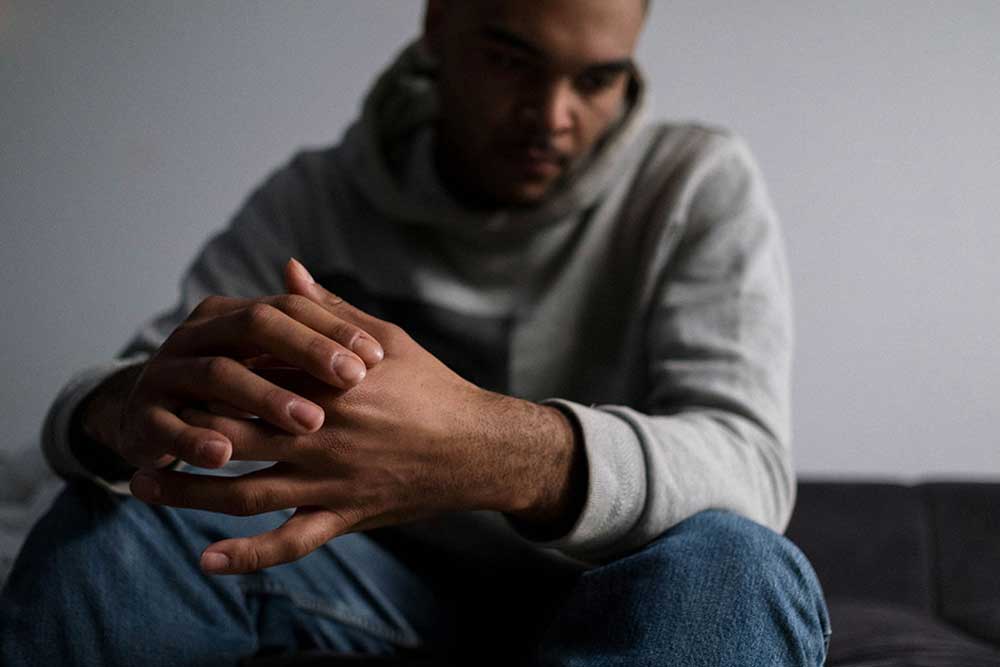#VaccinesWork’s top 10 Long COVID stories
Long COVID has altered the lives of millions of people, all living in the limbo of experiencing COVID-19 symptoms weeks or months after their initial infection, yet not knowing how or when they will recover. On International Long COVID Awareness Day, here are ten stories about a condition that we still have much to learn about.
- 15 March 2023
- 5 min read
- by Priya Joi

Long COVID has been the shadow pandemic that has left around 65 million with persistent COVID-19 symptoms including fatigue, brain fog, muscle ache and shortness of breath that remain three months after the initial infection. Up to one in five people infected go onto develop the chronic condition.
Although so much is still unknown about the condition, different proposed biological mechanisms including viral persistence, autoimmune reactions and reactivation of latent viruses are being tested, alongside potential treatments.
15 March is International Long COVID Awareness Day. As #VaccinesWork has reported on every aspect of Long COVID since the start of the pandemic three years ago, here are our top ten stories that have offered new insight into the condition.
1. What happens when you don't recover from COVID-19?

During the early months of the COVID-19 pandemic, the main focus of public health systems was on avoiding hospitalisation and death. Yet the lingering effects of SARS-CoV-2 infections are something we should all be worried about, even if our initial symptoms are mild. For part of #VaccinesWork's Long Tail series, Linda Geddes looks at what we know about the condition three years into the pandemic, including Long COVID subtypes.
2. COVID-19 vaccination protects against Long COVID

Increasingly, data indicates that even though vaccinated people may have breakthrough infections they are more protected from severe disease and death, and they are also at less risk of developing Long COVID than those who are not vaccinated.
3. Nine factors that could boost your risk of Long COVID

While it's still not entirely clear why some people go on to develop Long COVID and others recover entirely, there are some associations that have emerged, including what sex you are, pre-existing conditions and age.
4. Five things to know about Long COVID and chronic fatigue syndrome

Long COVID shares similarities with other post-viral conditions, and one of the most talked about crossovers is with chronic fatigue syndrome (CFS) – also known as myalgic encephalitis (ME). Here is what we know so far, including that half of Long COVID patients have CFS, that COVID-19 could reactivate CFS symptoms, and antivirals could help prevent Long COVID and treat CFS.
5. 'Like being hit with a cricket bat': A doctor's battle with Long COVID

What is it like to develop a mysterious chronic condition with no treatment or known duration? Dr Paul Garner, a British infectious disease expert at the UK's Liverpool School of Tropical Medicine caught COVID-19 early in 2020, and then developed Long COVID. Dr Garner was part of the original team that set up the Cochrane Collaboration to synthesise evidence to inform health decision-making. He chronicled his illness in a series of blogs in the British Medical Journal. In one of these blogs, he talked about how changing the way he thought – reprogramming his mind – helped him recover from Long COVID, which drew considerable backlash from activists and lobby groups. Here he talks frankly with Priya Joi about his experience over the past year, how he recovered, and what he thinks needs to change in the way Long COVID is managed.
6. The race to understand Long COVID in children

Around 10% of children and young people develop persistent symptoms after their initial COVID-19 infection. Dr David Warburton of Children's Hospital Los Angeles explains how the US National Institutes of Health's RECOVER COVID initiative could help to understand why these long-term effects happen, and what to do about them.
7. Reinfection worsens Long COVID

Around one in eight people who get COVID-19 go on to develop Long COVID – post-infection symptoms persisting for at least a month. Reinfections of COVID-19 even in people who have been vaccinated have become increasingly common since the emergence of the Omicron variant. The UK charities Long COVID Kids and Long COVID Support conducted an internet survey that indicates that reinfection can worsen Long COVID – indicating that booster doses of the vaccine continue to be important.
8. An immunologist’s reflections on nine months of long COVID

Dr Stephanie Longet, who moved recently from the University of Oxford, UK, to be an assistant professor at the University of Saint-Etienne in France, had studied how to trigger immunity in the mucous membranes such as inside the mouth and nose long before the COVID-19 pandemic hit. When she became sick with Long COVID in June 2022, from which she has still not fully recovered, her work took on a new personal relevance. Now, she is working on how to induce mucosal immune responses to SARS-CoV-2 infection through vaccines targeted at the nose and throat, where the virus enters the body. She spoke to Priya Joi about her mission to understand the condition better.
9. Mental health conditions raise risk of Long COVID

Long COVID symptoms are very varied, including psychological and physiological conditions, and include mental health symptoms – such as brain fog, depression, anxiety and insomnia – as well as physical symptoms such as muscle ache and extreme fatigue. Data now indicates that people reporting depression, anxiety and stress before a COVID-19 infection are 50% more likely to report Long COVID symptoms.
10. Q&A: Long COVID and the workplace: What employers could do better

Globally, an estimated 200 million people are living with ongoing COVID-19 symptoms, many of them in the prime of their working careers. Many have been unable to work, but aren't sure if they will ever work again, while others have gone back to work but need support. So, what can businesses do to support them and help themselves? UK human resources professional Lesley Macniven spoke to Linda Geddes about potential solutions, including consulting occupational therapists to redesign people's roles and flexible working conditions.
More from Priya Joi
Recommended for you








